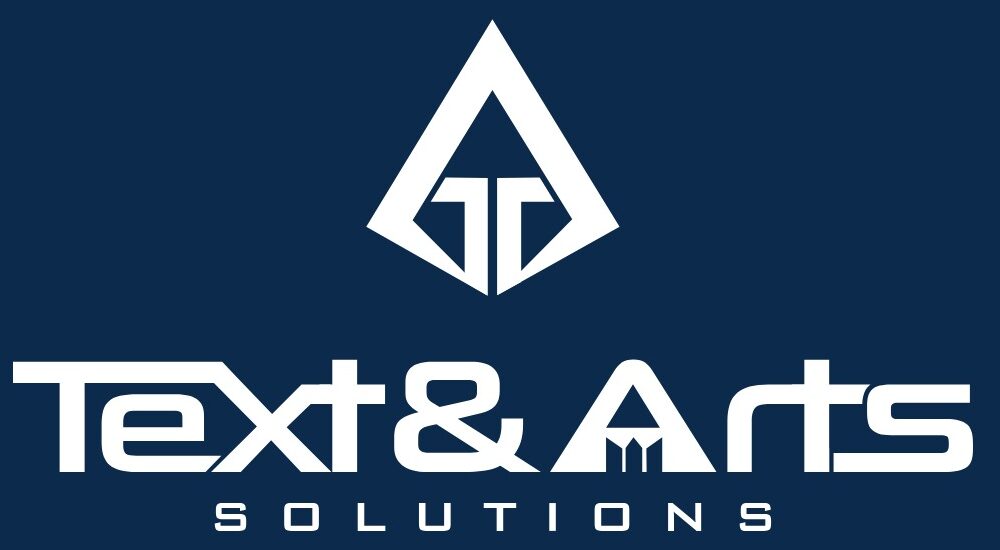Introduction
If your corporate video starts with a meandering intro, vague promises, and a logo that lingers a little too long, most viewers are already gone. In a scroll-first world, attention is the rarest currency—and “winging it” is a guaranteed way to spend it badly. Corporate video scripts are not just words on a page; they are the engine that powers clarity, pacing, brand voice, and ultimately conversions. With a tight script, you align your message, visuals, and call-to-action so viewers know exactly why they should care—and what to do next.
This guide shows you how to plan, write, and polish corporate video scripts that keep people watching. You’ll get practical frameworks, step-by-step processes, mini examples, and a simple checklist you can use before your next shoot. Whether you’re creating a 30-second social spot or a 3-minute brand film, a strong script will save time, reduce reshoots, and dramatically improve watch-through and response rates.
Why Corporate Video Scripts Matter (and How They Save You Money)
A well-built script is pre-production insurance. It reduces ambiguity, accelerates decisions, and keeps the team aligned.
Four reasons scripts are non-negotiable:
- Clarity beats cleverness. You’re not trying to win poetry awards; you’re helping a buyer solve a problem. Scripts ensure the message lands on the first watch.
- Pacing protects attention. Strategic beats (hook → value → proof → CTA) keep viewers engaged and stop drop-offs.
- Consistency scales brands. Scripts lock tone, terminology, and compliance language so multiple videos still sound like you.
- Efficiency lowers cost. When you know what each line, scene, and graphic must do, you avoid endless “Let’s try one more version” on set and in the edit.
What a Script Does Beyond Dialogue
- Maps the viewer journey: problem recognition → solution tease → proof → next step.
- Marshals visuals: A-roll, B-roll, text overlays, and motion graphics serve specific beats, not random fillers.
- Sets timing: Every sentence has a purpose and a timestamp.
- Enforces brand voice: Aligns word choice and tone with your brand guidelines.
- Supports accessibility: Plans captions/subtitles and on-screen text for silent-auto-play platforms.
Symptoms You’re “Winging It”
- You “fix it in post” too often.
- Speakers ramble; edits feel jumpy.
- On-screen text contradicts the voice-over.
- Legal, medical, or pricing disclaimers arrive late (or not at all).
- CTA is vague (“Learn more”) and buried in the last 5 seconds.
- Teams debate the “real message” after the shoot—because it was never agreed before.
Anatomy of High-Converting Corporate Video Scripts
High-performing corporate video scripts share a predictable architecture. Use this as your blueprint.
The Three-Act Business Structure
- Act I – Hook (0–5 seconds): Lead with a pain point, surprising stat, or visual pattern break.
- “Your ERP isn’t slow. It’s busy doing yesterday’s work.”
- Act II – Value (5–45 seconds): Show how you solve the problem. Use one core idea, one proof, one differentiator.
- Demo → key feature → outcome (time saved, risk reduced, revenue unlocked).
- Act III – Next Step (last 5–10 seconds): Make the CTA specific and easy.
- “Book a 15-minute workflow audit at [URL].”
Script Building Blocks (Checklist)
- Objective: What must this video achieve? (e.g., demo signups, recruitment applications)
- Audience Persona: Who’s watching? What do they fear? What do they want?
- Single Dominant Message: If viewers remember one idea, what is it?
- Proof: Short case snippet, testimonial line, stat, or visual before/after.
- Differentiator: What can you claim that competitors can’t?
- CTA: One clear action and destination (URL/QR/vanity link).
- Compliance: Mandatory disclaimers, claims checks, or legal phrasing.
- Accessibility: Captions, readable typography, high-contrast text.
- Distribution Notes: Aspect ratios (16:9, 1:1, 9:16), cutdowns (6s, 15s, 30s), platform hooks.
Step-by-Step—How to Write Corporate Video Scripts That Keep Viewers
Follow this practical workflow from blank page to locked script.
10-Step Script Workflow
- Define the single business goal. (e.g., “Increase demo bookings by 20% this quarter.”)
- Interview a sales rep or customer-facing teammate. Capture real objections, phrases, and outcomes.
- Pick the angle. Choose one dominant benefit (speed, accuracy, savings, compliance).
- Draft the outline. Hook → Value → Proof → CTA. Keep it on one page.
- Pair visuals early. Add a column for A-roll, B-roll, text overlays, and graphics.
- Write for ear and eye. Short sentences, active voice, strong verbs; plan room for on-screen text.
- Time your beats. Read aloud at 150–160 wpm; mark timestamps and pauses.
- Table read. Have the least technical person read it. If they don’t “get it,” it’s not ready.
- Tighten. Delete any sentence that doesn’t pull its weight; cut 10–20% words.
- Lock compliance & CTA. Confirm approvals and landing experience (page headline, form length).
Style Rules that Protect Watch-Through
- Front-load value. No long logo idents; 1–2 seconds max.
- Use plain language. Replace jargon with outcomes: “Reduce manual steps by 60%” beats “synergize workflows.”
- Write to visuals. If you say “two clicks,” show two clicks.
- Design for silence. Assume viewers watch on mute; on-screen text must carry the message.
- One CTA. “Book a demo” or “Download the guide”—not both.
- Legal is a beat, not an afterthought. Script it so it doesn’t derail the flow.
Mini Script Examples You Can Steal
Below are compact, time-stamped outlines you can adapt.
60-Second Brand Film (B2B SaaS)
- 0–3s (Hook): “Your team isn’t slow—your tools are arguing.”
Visual: Split-screen of messy workflows vs. clean dashboard. - 3–15s (Problem + Stakes): “Every handoff adds friction. Data silos break decisions.”
Visual: Notifications piling up → missed deadline. - 15–35s (Solution + Differentiator): “NovaOS unifies projects, budgets, and approvals in one view.”
Visual: Single dashboard, cross-team approvals in 2 clicks. - 35–50s (Proof): “Teams cut monthly close time from days to hours.”
Visual: Clock speeds up; testimonial lower-third. - 50–60s (CTA): “See your data in one view. Book a 15-minute audit.”
On-screen text + URL + QR.
30-Second Product Explainer (Hardware/Manufacturing)
- 0–2s (Hook): “Downtime is expensive. Predict it before it happens.”
- 2–12s (Value): “Sentinel sensors detect vibration anomalies 48 hours early.”
Visual: Simple line graph → anomaly alert. - 12–24s (Proof + Differentiator): “Installs in 10 minutes. Works with your existing PLCs.”
Visual: Clamp-on shot; no wiring close-ups. - 24–30s (CTA): “Get a pilot kit this week.”
On-screen: URL + phone + “Pilot in 7 days.”
Use these skeletons to frame your own corporate video scripts, then swap in your product, visuals, and CTA.
Case Snapshots (Hypothetical, But Typical)
These scenarios illustrate common before/after improvements when teams adopt solid scripting.
Snapshot A—Recruitment Video
- Before: 4-minute talking-head from the CEO; generic claims about culture; no role-specific outcomes; CTA is “Visit our careers page.”
- After (Scripted): 75-second role-focused video featuring two engineers, one real project, three growth facts, and a direct CTA: “Apply for Backend Engineer (Gurugram) today.”
- Result You’d Expect: Higher qualified applications because the video speaks to a specific role and outcome, not vague values.
Snapshot B—Complex Product Demo
- Before: 6-minute screen recording with tiny UI and no narrative; viewers drop at 30 seconds.
- After (Scripted): 90-second demo with a single use case, zoomed UI, three overlay callouts, and a one-click CTA to a longer, chaptered tutorial.
- Result You’d Expect: Better watch-through and more demo requests because the short video tees up the right next step.
Common Script Pitfalls—and What to Do Instead
Avoid these traps that quietly kill retention.
Pitfall 1—Too Many Ideas, Not Enough Focus
- Fix: One video, one promise. If you have three features, create three 20–30 second spots rather than one omnibus.
Pitfall 2—Jargon Over Outcomes
- Fix: Translate features into business impact:
- “Automated reconciliation” → “Close the books two days faster.”
- “Edge compute” → “Get results even when the network drops.”
Pitfall 3—Weak Hooks
- Fix: Lead with a moment the viewer recognizes. Examples:
- “Still toggling eight browser tabs to approve one invoice?”
- “Your warehouse knows the answer; your dashboard doesn’t.”
Pitfall 4—No Script for Silent Playback
- Fix: Plan on-screen text, captions, and bold visuals. Assume mute by default on social feeds.
Pitfall 5—CTA Is an Afterthought
- Fix: Script the CTA first. It shapes the entire narrative and landing page alignment.
Pitfall 6—Ignoring Mobile & Accessibility
- Fix: Big type, high contrast, safe margins. Keep essential text within central 60% of the frame.
Formatting Your Corporate Video Scripts (Template)
Use a simple two-column template to keep teams aligned.
Two-Column Script Template
Left (Video): Camera notes, B-roll, lower-thirds, overlays, motion graphics
Right (Audio): Voice-over, on-screen dialogue, SFX/Music cues
Example (excerpt):
- Video: Close-up of dashboard. Overlay: “Approve in 2 clicks.”
- Audio: VO—“Approvals happen where the work lives—no email threads.”
Add a Timing column if your team needs hard beats, and a Compliance column when legal language is required.
Pre-Production Meets Post-Production—Plan It in the Script
Great edits are scripted before the shoot.
Script Elements That Save Your Edit
- B-roll list: People, process, product, proof (screen records, graphs).
- Lower-thirds: Pre-approved names, titles, brand fonts.
- Motion cues: Where icons animate, where numbers count up, when the hero product appears.
- Alt takes: 6-second hook versions for ads; 15-second cutdowns for social.
Accessibility and Localization
- Captions: Script them, don’t auto-generate and forget.
- Readability: Keep on-screen lines under ~42 characters.
- Localization: Plan for multi-language voice-over or subtitles; avoid idioms that don’t translate.
- Text & Arts bonus: If you serve multiple markets, script timing that fits both English and Hindi subtitles cleanly.
Distribution Strategy Starts in the Script
If you plan distribution late, your script will be generic. Plan for the channel at line one.
Write for the Platform
- LinkedIn: Problem-first hooks, bold captions, human faces, 30–60 seconds.
- YouTube: Clear value prop, search-friendly title, 60–120 seconds, end screen targets.
- Website/Email: Higher production polish; CTA to a form or booking page.
- Paid Ads: 6–15 seconds, single claim, irresistible CTA.
Repurposing Plan (Decide Before You Shoot)
- Record extra lines to cut 6s/15s hooks.
- Capture customer sound bites for testimonial shorts.
- Shoot clean plates for graphics-heavy variants.
- Plan a vertical frame pass for 9:16 reels.
Quick Reference—The Corporate Video Scripts Pocket Checklist
Before you roll camera, tick these boxes:
- Goal and audience are single-minded.
- Hook is concrete, not cute.
- Value prop is stated within 10–12 seconds.
- Proof appears before the final 10 seconds.
- One CTA, said and shown.
- Captions and key text planned for mute playback.
- Legal/compliance lines scripted.
- Visuals, overlays, and graphics mapped to lines.
- Cutdown versions pre-planned (6s, 15s, 30s).
- Landing page headline/offer mirrors the script promise.
Sample Script Draft (Fictional Company) — 45 Seconds
Use this as a reference to pace your own corporate video scripts.
0–3s (Hook):
VO: “Your month-end shouldn’t steal your weekend.”
On-screen: “Close 2 days faster.”
3–20s (Value):
VO: “With LedgerLite, all your spreadsheets sync to one source of truth. Duplicate entries vanish. Approvals happen in-app.”
Visuals: UI demo; overlay callouts “Auto-match,” “One-click approve.”
20–35s (Proof + Differentiator):
VO: “Teams like Finch Retail cut manual steps by half—without switching ERPs.”
Visuals: Before/after screen; quick testimonial lower-third.
35–45s (CTA):
VO: “See your close in one view. Book a 15-minute audit.”
On-screen: URL + QR + “15-min Audit.”
Production Notes—Getting Better Performances On Camera
A strong script needs good delivery.
Direction Tips
- One sentence per breath. Helps non-actors sound confident.
- Eyes on interviewer, not lens (unless a direct-to-camera message).
- Stand, don’t sit for energy during VO or to-camera lines.
- Warm-ups: Read the CTA five ways; pick the most natural.
- Room tone: Record 30 seconds; saves your editor later.
Visual Consistency
- Brand palette on overlays. Keep text legible: high contrast, safe margins.
- Lower-thirds: Consistent style for names/titles.
- Motion graphics: Use them to clarify, not to decorate.
Measurement—Close the Loop
You can’t improve what you don’t measure. Script for metrics.
Script-Level KPIs to Track
- Hook retention (0–5s). Are people staying? If not, you buried the lead.
- Watch-through rate. Do viewers reach the proof?
- CTA clicks or bookings. Does the script motivate action?
- Lift by variant. Test two openings or two CTAs with the same audience.
- Channel fit. The same script won’t win on every platform—your data will tell you.
Section 4 (CTA): Partner with Text & Arts Solutions
You don’t need to reinvent the wheel for every video. At Text & Arts Solutions, we craft end-to-end corporate video scripts and production assets that move the needle:
- Strategy & Research: Audience interviews, message hierarchy, competitive scan.
- Scriptwriting & Storyboarding: Two-column scripts, shot lists, and motion cues.
- Production & Post: Direction, filming, sound, editing, color, motion graphics.
- Localization & Accessibility: Hindi/English VO & subtitles, on-screen text, high-contrast design.
- Platform-Ready Cutdowns: 6s, 15s, 30s versions; 16:9, 1:1, 9:16 exports.
- Performance Iteration: Hook/CTA A-B testing guidance and thumbnail copy.
Ready to turn watchers into buyers?
👉 Book a discovery call with Text & Arts Solutions to script your next high-performing video, from concept to final cut.
Conclusion
Unscripted corporate videos feel spontaneous—but they cost you attention, clarity, and conversions. A smart, simple structure—hook, value, proof, CTA—anchors your story and keeps your audience engaged. By pairing message with visuals, planning for silence and accessibility, and aligning the landing experience with the promise of the video, you’ll ship work that performs across platforms. Use the frameworks, templates, and checklists here to draft corporate video scripts your team can execute confidently—then measure, iterate, and keep improving. The result isn’t just a prettier video. It’s a predictable system for telling your story, winning trust, and getting action.
When you’re ready to accelerate quality and speed, Text & Arts Solutions is here to help you write, produce, and optimize videos that people actually finish—and act on.


